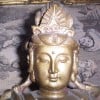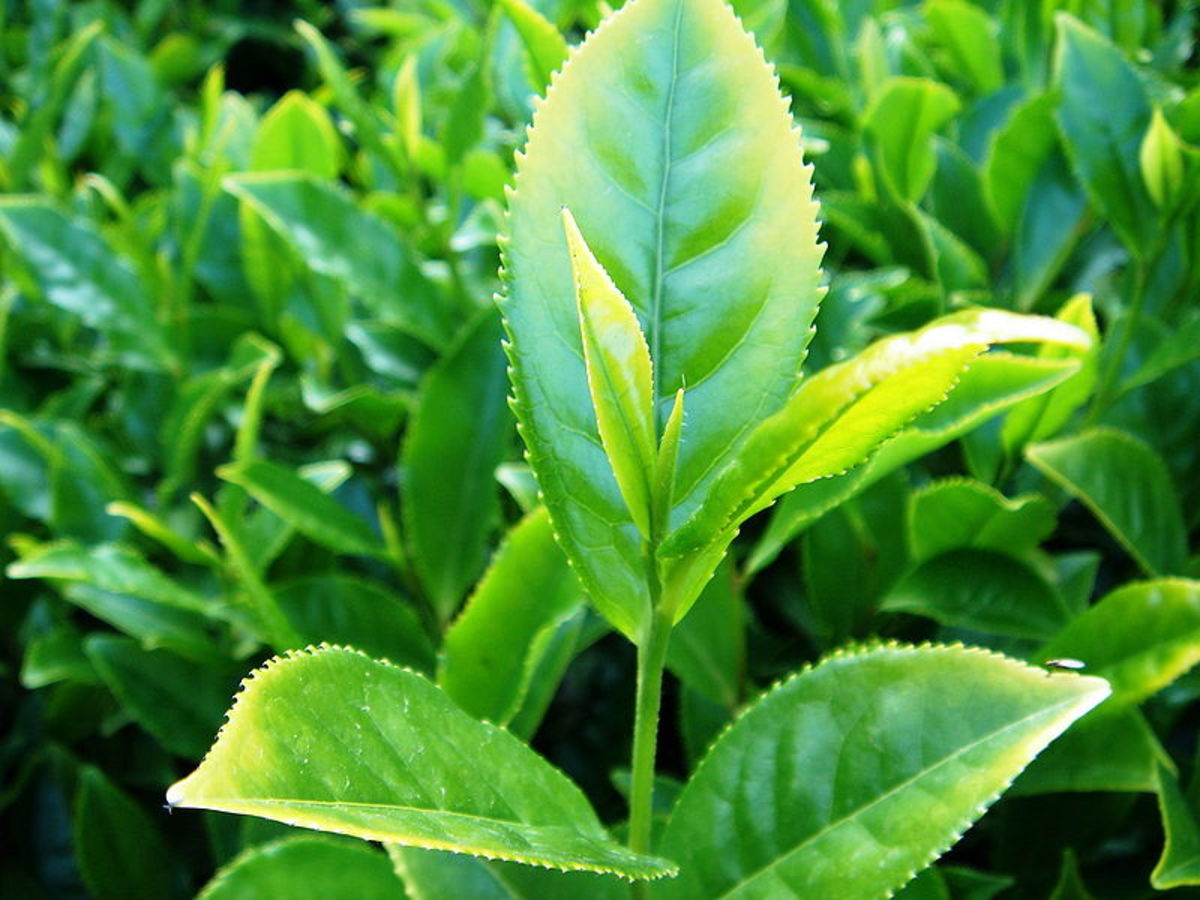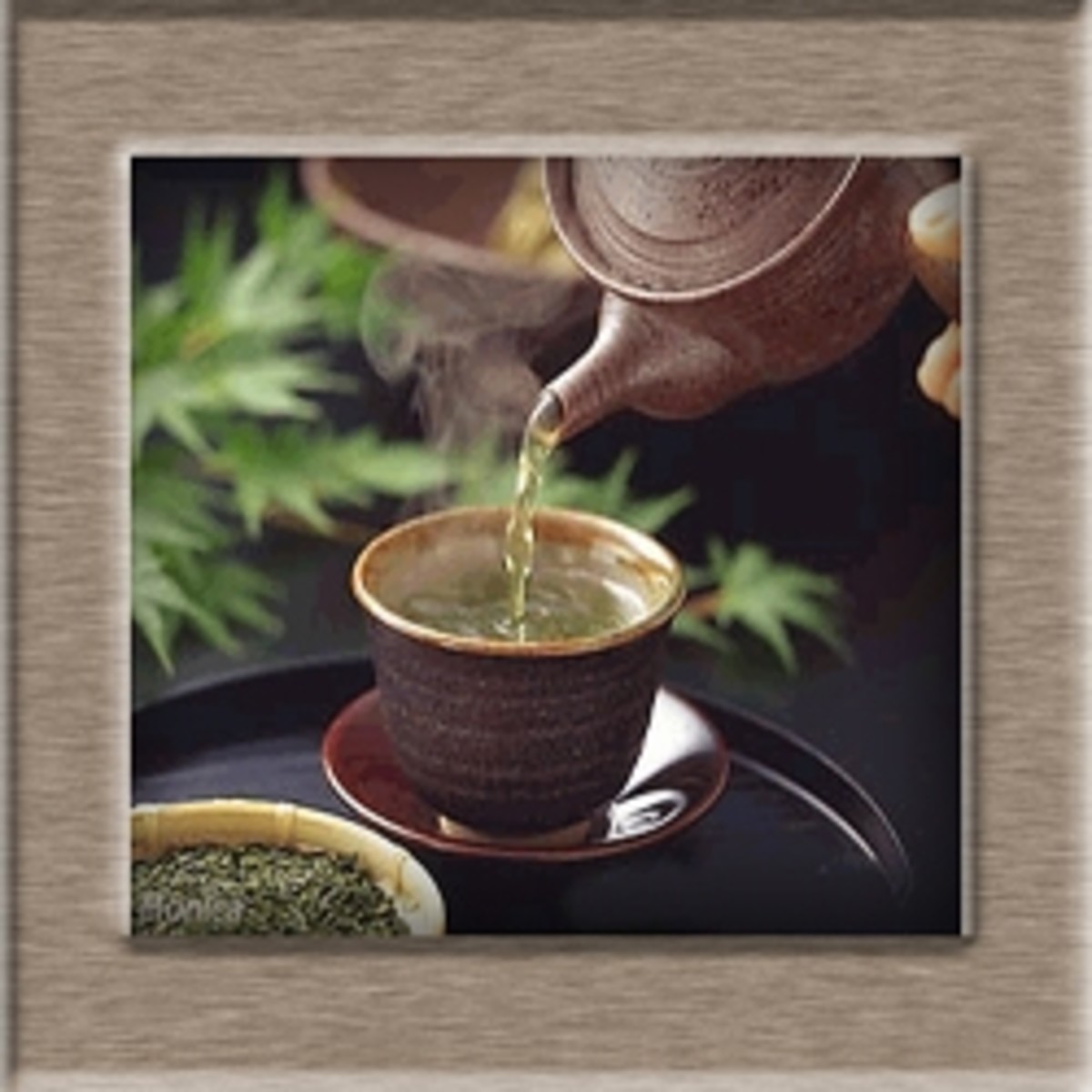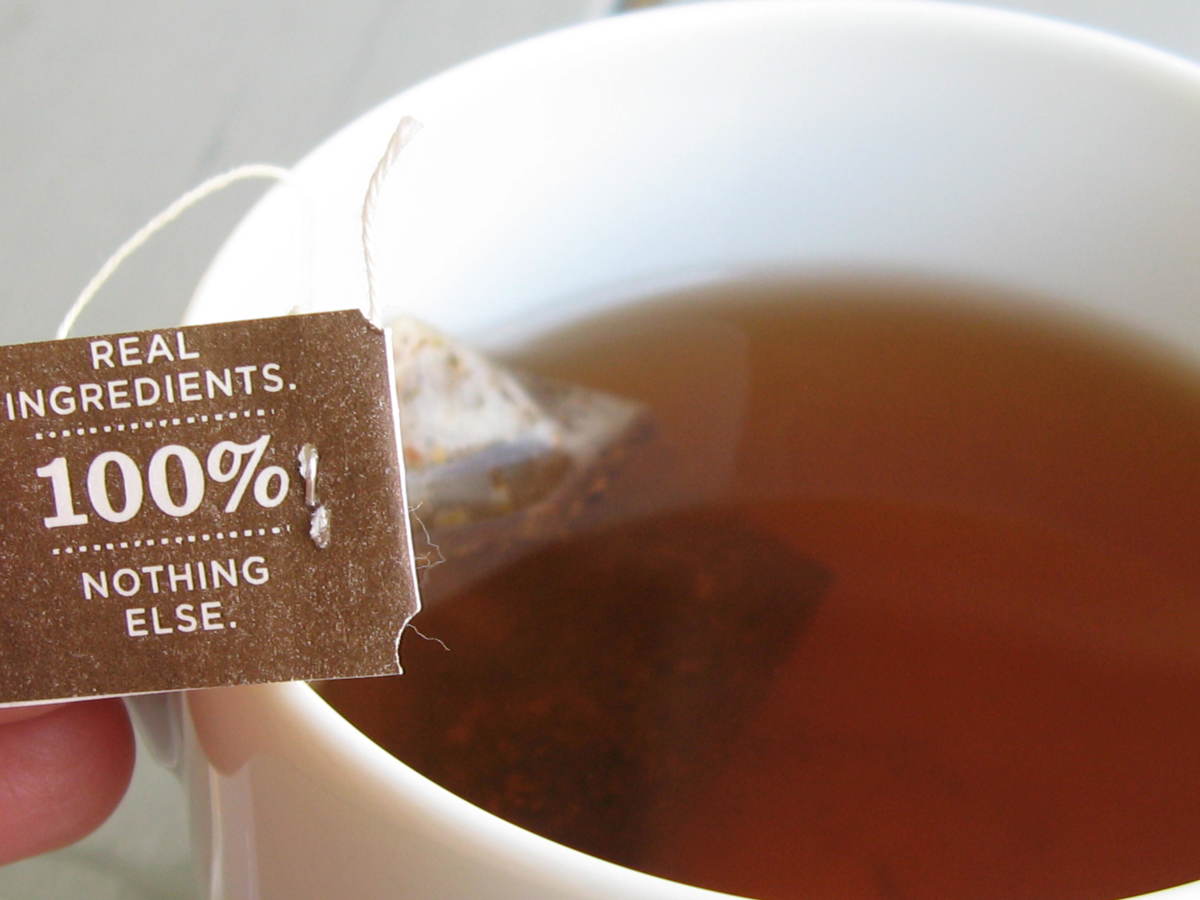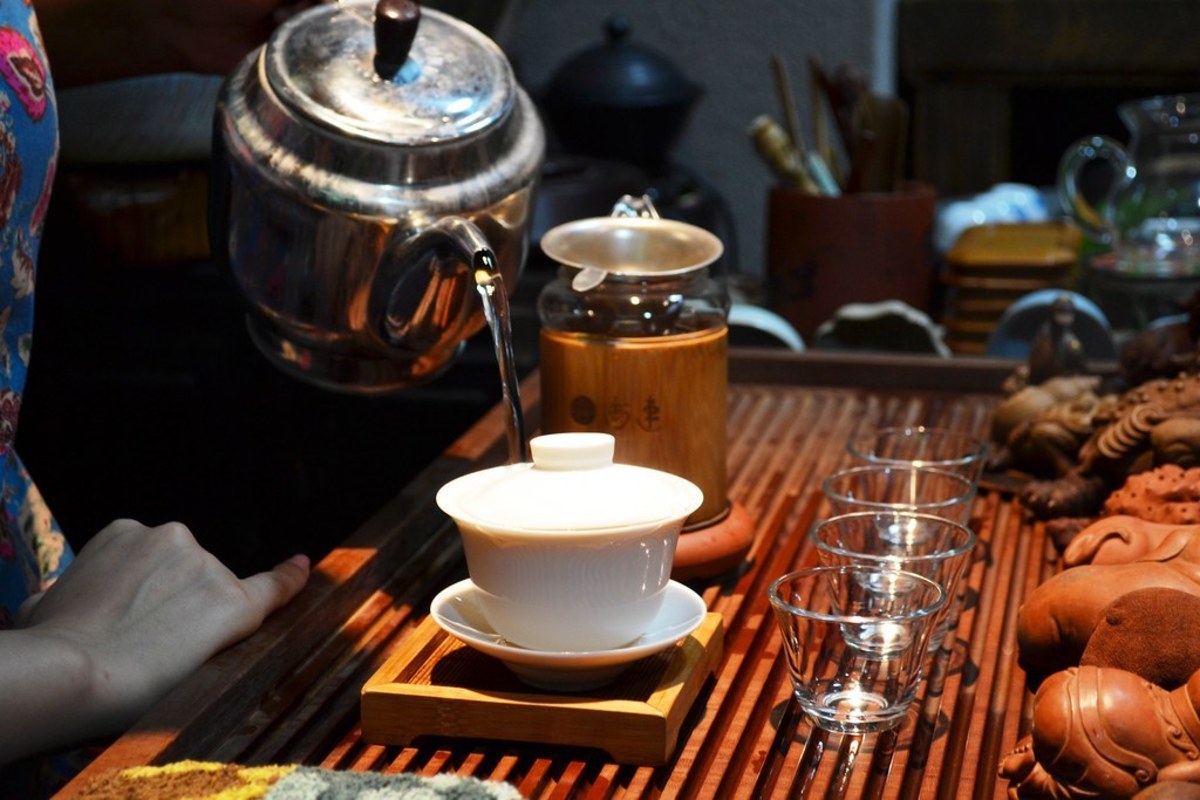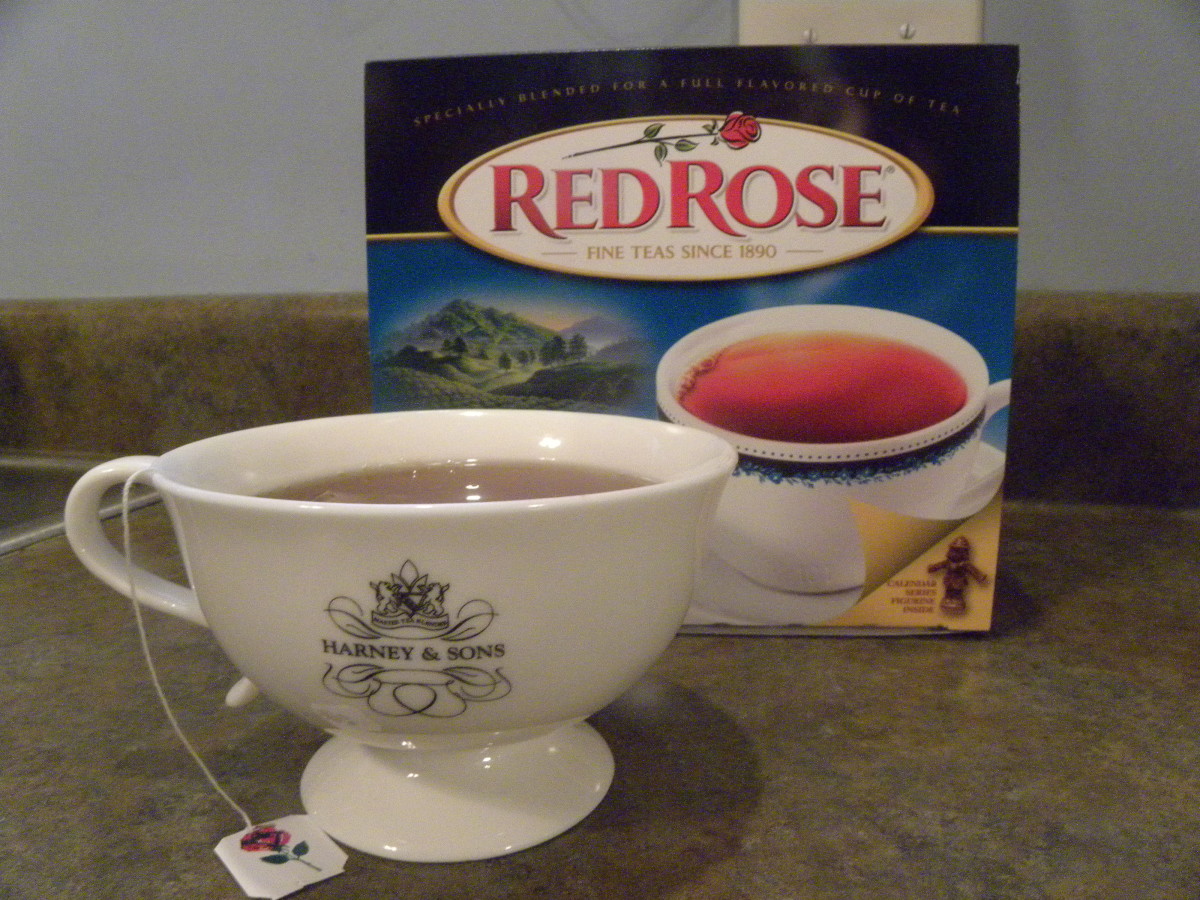Types of Teas, Tea Facts and Tea Recommendations
Tea growing on hillsides in China
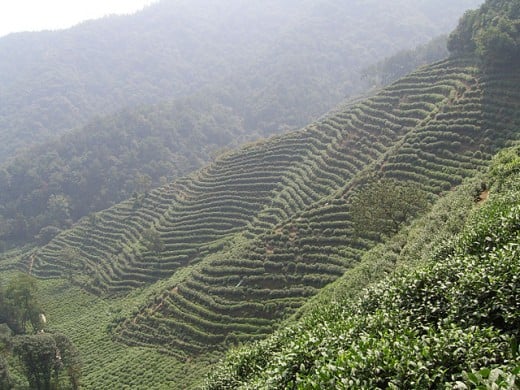
I'm a tea drinker, and I like Republic of Tea
I'm a tea drinker, plain and simple. I have coffee occasionally, but for my daily use, I really prefer tea. It feels better to me, and it has so many wonderful flavor possibilities - flavors that are created with plants and plant oils rather than the chemical sugar syrup that's too often used to flavor coffee drinks.
I like a wide variety of teas. Unfortunately, I've been seeing the price of variety teas increase over the years. It's not unusual to see a medium or even low quality tea - that's not even packaged to retain the tea flavor - going for five dollars for 15 tea bags. It seems that people who like tea will pay for status - just like people who like coffee will (Starbucks anyone? Ever get out of there for a dollar?)
It seems that my tea preferences for bagged tea have settled on the Republic of Tea varieties. Over time, I've become more and more centered on them. I like their fair trade practices. I like their organic preferences. I like their social responsibility.
But most of all, I like the teas and other ingredients that Republic of Tea chooses. When they're making a blend of non-tea and tea flavors, they use real ingredients, not chemical pseudo-flavors.
And when they can't put the actual food, like mango or peach, into the tea, they use a steaming process to take the essence of that food flavor and add it to tea. (If you think of the process of taking the fragrance of roses from a rose, it would be comparable.)
The combinations they put together are always interesting and delightful to me. I have tried a lot of teas in my explorations into the world of drinking bushes and shrubs. Until I found these tea blends, I had never found a company that, when they described a tea and it sounded good, every flavor tasted as they had described it.
Now, I know that some of the time when I disliked a tea that sounded good in the description, it was because I had just found a tea flavor that I didn't like. For example, I've learned that I'm not that crazy about Rooibos in almost any tea combination, and that I don't like ginger in tea. So I haven't tried any of those blends with Republic of Tea.
But some of my disliking a tea that sounded good also comes from a tea company creating a flavor combination that's based on poor-quality, harsh tea. Or it might be that the flavor combination is unbalanced, and relies too heavily on a particular flavor. (Sometimes that means only that the tea has been on the shelf too long and some ingredients have lost the oils that provided that flavor.) So far, I haven't found the Republic of Tea flavors to have any of those problems.
Tea is grown throughout SE Asia
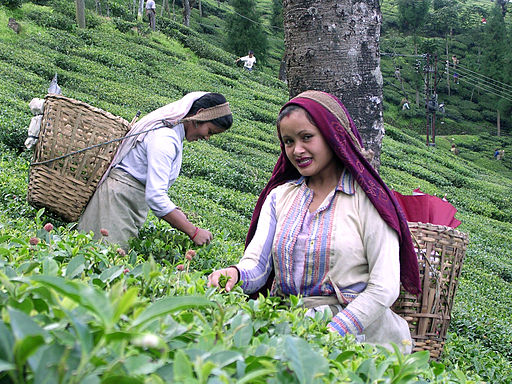
A good tea that brews well and lasts well
When you look at the Republic of Tea prices, you might think they're too expensive. But, even being slanted slightly to the miserly side, I don't feel that way, especially after tasting the blends and learning how the flavors are made - and that they aren't created in some lab.
I don't tend to buy Republic of Tea as bulk tea, though. I buy their tea when I want to use a tea bag. If you stick with the tea varieties that have 50 bags in them and that cost about $12.00, you're paying about 25 cents per cup of tea. If you pay around $15.00 for 50 bags, you're paying about 30 cents a cup. As I usually brew one bag twice, I pay between 12 and 15 cents per cup.
I don't tend to like my tea as strong as most people do, so I can't say whether or not anyone else would get two cups from one bag. But the flavor holds up very well for me. Anyway, even at 25 or 30 cents a cup, I think that's a very reasonable price for a yummy tea treat.
Republic of Tea has even taken well-known flavors and enhanced them very nicely. Their Earl Greyer is an example. I had limited the amount I would pay for the Republic of Tea 50-bag tin to $12, because that covered the two teas I bought from them at that time. I thought I could explore several more at the same price. Then a friend served Earl Greyer to me. I promptly increased my price limit to $15.00 for 50 tea bags.
I have always liked Earl Grey, but have also always wanted the Bergamot flavor to be a little stronger. This was perfect. I buy the decaf Earl Greyer 50-count. While I used to drink Earl Grey tea in the morning, I find I like this decaf version at night. It's one of my at-home good book, savoring teas.
If you're drinking coffee at work, and are tired of the prices, don't switch to expensive tea from the coffee cart. Give yourself a price break and use tea bags. If what you're looking for is a buzz, find the right tea for you and buzz away. If you need sugar, put a little sugar or honey into it.
The tins Republic of Tea varieties are stored in are especially handy in a desk drawer. I think I got hooked on them at work after I had tried to keep several other teas and they all went tasteless from poor packaging. The tin containers seal so snugly that you could probably work in a paint shop and not have the tea contaminated with any fumes.
The tea keeps its flavor for a long time in those tins. Tightly packaged green tea keeps for at least a year, and black tea for at least two years. So there's plenty of time to use it.
World Tea Production
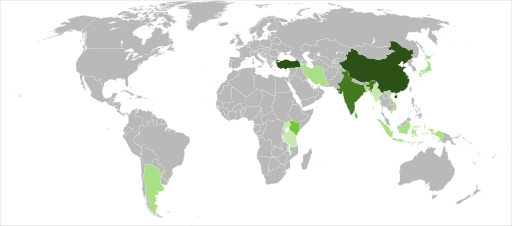
The tea Camellia is a very different Camellia than hybrids and cultivars found in landscaping, but you can grow your own Camellia Sinensis bush outside if you live in zone 8 or warmer. It provides a very fragrant flower. However, you have to wait for about 4 years before you pick the first leaves - you could pick before then, but the flavor wouldn't be as good.
Over 3,000 tea plant varieties exist
Over 3,000 varieties of the basic tea plant exist in the world, depending on location, the history of that plantation's plants, the altitude, humidity and temperatures, as well as other growing qualities. All of those teas are Camellia bushes, mostly Camellia Sinensis.
Oddly enough after so many varieties that create different quality and flavor, there are relatively few basic steps needed to process tea.
Tea processing makes a huge difference.
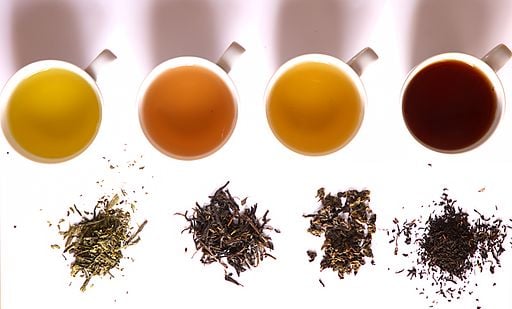
Orange Pekoe makes a great sun tea
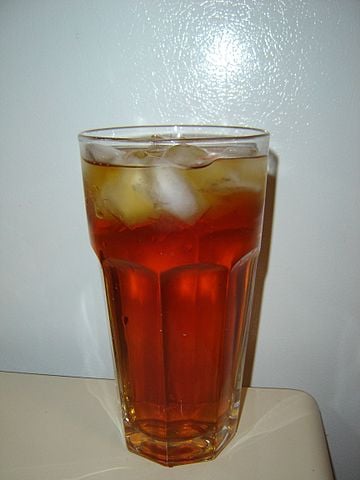
Four basic types of tea are commonly sold
Essentially, the newest tea leaves and sometimes the buds, are picked. The leaves are then either allowed to wilt, or not. They are bruised by rolling, or chopped, or they are left whole. And they are either allowed to darken and/or ferment, or they are not. Then they are dried.
The tea leaves that are bruised darken basically in the same way an apple darkens after you take a bite out of it. The tea that is not bruised still has all of its antioxidant qualities, and is, in my humble opinion, the most healthy.
The black teas are more commonly preferred in all areas of the world that required the tea to be transported any great distance. This is because darkened tea is more stable than green tea when it's transported for long distances. So Europeans, people in the Americas, Mongolians, etc. like stronger black teas because it's the custom, created by what was generally available for a long period of time.
The major types of teas widely sold are:
- White tea. It's made of either only the tea buds or the buds and the first pair of leaves. The tea is allowed to dry with no heat, which retains the complex flavors. Because the enzymes in the leave may still be a little active, some slight oxidation may occur. However, the leaves are usually a light silvery color, and in bulk tea, the leaves aren't broken until they are brewed.
- Green tea. This requires picking early in the morning and being placed in baskets that allow a lot of air circulation. The whole process is designed to prevent oxidation, as much as possible, even of the plucked leave ends. A few green teas may be allowed to wither a little before the heating process. The tea is heated before it's dried to fix the chlorophyll and to kill the enzymes before drying. No bruising or oxidation is allowed to occur. After heating, green tea may have the most complicated processing steps. Some types of drying include low heat, tumbling, sun or shade. As many green teas are rolled into pellets, twists or other shapes, steam is also used at times. After the leaves are dried, if they haven't already been shaped in some way, they may either be left whole or ground into powder.
- Oolong tea. This is the most diverse tea. You may try one oolong that tastes almost like green tea, then try another oolong and find that it tastes almost like a black tea. It can vary widely, depending on how long it's allowed to oxidize. Oolong is usually picked as the bud plus two or three of the leaves. (More expensive oolongs that will be rolled or twisted may be picked as single leaves.) The leaves are withered in the sun, with intermittent turning to cause bruising and to control the heat and oxidizing process. When the level of desired oxidation is reached, the leaves are heated to kill the enzymes, which stops the oxidation. They are then dried.
- Black tea is the heartiest tea. When it's picked, buds can also be included, which turn golden brown during oxidation. The leaves are withered slightly so they are more pliable. Then they are either rolled for bruising or chopped and rolled. After the leaves are bruised, they are allowed to fully oxidize. Oxidization creates the dark color.
The more slowly black tea is oxidized, the more mellow its flavor. Generally, Chinese black tea is more mellow than Indian black tea.
"Orange Pekoe", a term usually found on Lipton tea, is a grading label for some black tea. It usually indicates a medium-quality tea, which most people find satisfactory. I like to use Orange Pekoe to make sun tea, with a sprig of fresh mint put into the tea water before it's set out in the sun to steep.
"Gunpowder tea" can be either green or oolong tea. The tea leaves are rolled tightly before they are dried. It's called gunpowder tea, because the tightly rolled leaves look like pellets of gunpowder.
There are also other tea treatments, such a yellow tea and post-fermented tea, but they aren't widely sold or usually found as common tea products.
Make a little ritual out of serving your tea
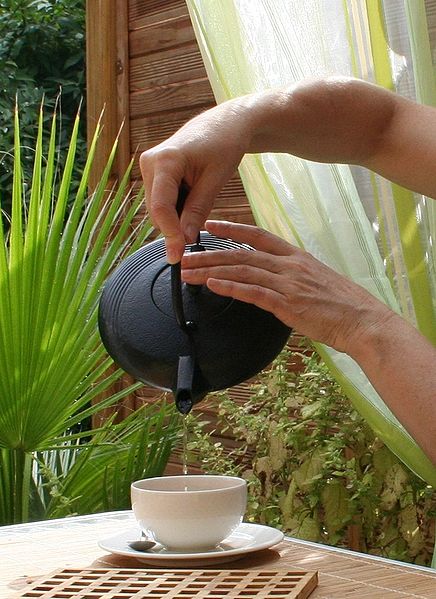
Green tea improves concentration and mood
How does the caffeine content of each type of tea measure up? Well, that can vary widely. Caffeine is generally thought to be stronger in black tea than in green tea. However, some green teas are very powerfully loaded with caffeine. So thinking that black tea is the most caffeinated is not always a reliable measure.
While green tea may contain less caffeine than either coffee or black tea, it contains more of the amino acid L-theanine, which interacts with tea caffeine and adds to alertness and concentration. (This is because green tea hasn't been allowed to oxidize.) That's why you are less likely to develop a jagged caffeine edge after drinking lots of tea that you would develop after drinking several cups of coffee.
However, the green tea caffeine/L-theanine combination still helps you to keep your brain working. L-theanine has several other benefits beside increasing concentration. It helps to lower stress, raise mood and keep the immune system in good shape. When I was doing huge, intense projects at work, I found that I functioned much better when I was drinking green tea than when I was drinking black tea or coffee - especially when those long hours dragged into the night.
A quick history of tea
Clipper ships delivered the tea

Republic of Tea on Amazon
Tea is easily contaminated by moisture or other odors.
When sailing ships were bringing bulk tea from China, they learned the hard way that tea is very sensitive to contamination by moisture and by odors around it. They learned this by shipping and selling their tea, only to find that some of it had become moldy in the ocean air. Even worse, they found that all of it had also had acquired that piquant essence associated with ship bilge. It smelled like bilge and, worst of all, when brewed, it tasted of bilge - well, not that anyone would ever drink bilge water. (What's in bilge? Oh, dead rats, urine, pitch. There's more, but you get the idea.) Not a taste that has a big following.
This is how European traders found that tea is very sensitive to absorbing the moisture and odors of anything around it. So tea chests were lined with metal and properly sealed to keep out all moisture and contaminants. Some tea is still shipped in similar containers today.
Oddly enough, while I started leaning toward The Republic of Tea teas because of the flavors and quality, and have my written-in-stone favorite flavors, I actually decided to settle on them as my only source when buying tea bags, because I can re-use 100% of their packaging.
I'm one of those tree huggers, who likes to consider what I'm also going to do with the packaging after I'm done with the product. If individually wrapped tea bags are paper, the flavor won't last long, and if they're paper lined with foil, they don't recycle.
Republic of Tea bags are unbleached with no tags or staples, and, as I mentioned, the tea comes in closed-tight, reusable and recyclable tins. When I'm done with a bag, I just snip it in half and throw it in the compost..
If you're not a composter, and you drink green tea, it's great for your house plants. I knew a lady who had the most beautiful, huge African Violets I've ever seen, and her main care of them was watering them with her leftover green tea after dinner; she and her husband had green tea every night with dinner. (I wouldn't have gone to sleep until the sun went down the next day if I'd had green tea at dinner!)
Republic of Tea Decaf Earl Greyer on Amazon
Innovation for bulk tea - the Tea Stick
I love those Republic of Tea tin tea containers
Republic of Tea sells their teas in nicely sealed tin containers. I like those containers! I can put all kinds things in them around the house, and change their appearance for different rooms or uses. In the kitchen, they protect my other dry food products just as well as they had protected the flavor of the teas. They also let me use a smaller container when I don't have that much left of something. A bit of rice, a cup of cornmeal, etc.
Update: if you buy from them online, you can order refills of their teas to put in the tin containers for 50 cents less than the tea in the tin.
They also protect everything else, from bath salts to craft items. If I don't need a tin right at that time, I could also easily recycle it (though I have to admit that I haven't let one of them go to recycling yet). They have many uses and are very easy to re-label. A quick soak to remove the Republic of Tea label, and off I go with my own labeling.
I've even dressed these lovely little tins up and used them to give small gifts of spices, my own spice blends, homemade candy, etc. They make a great container for a small guest gift. And once you make them, you can store them very easily for later use. I even made some candy in the fall and froze it for quick gifts. (Of course, I didn't decorate the tins until I had taken them out of the freezer and thawed them.)
So, as you can see, I prefer the Republic of Tea for a lot of reasons. I like the tea a lot. I like that I'm getting my money's worth, and I like that my money is being used for beneficial purposes. And I don't have to throw any part of the tea or packaging to a landfill.
